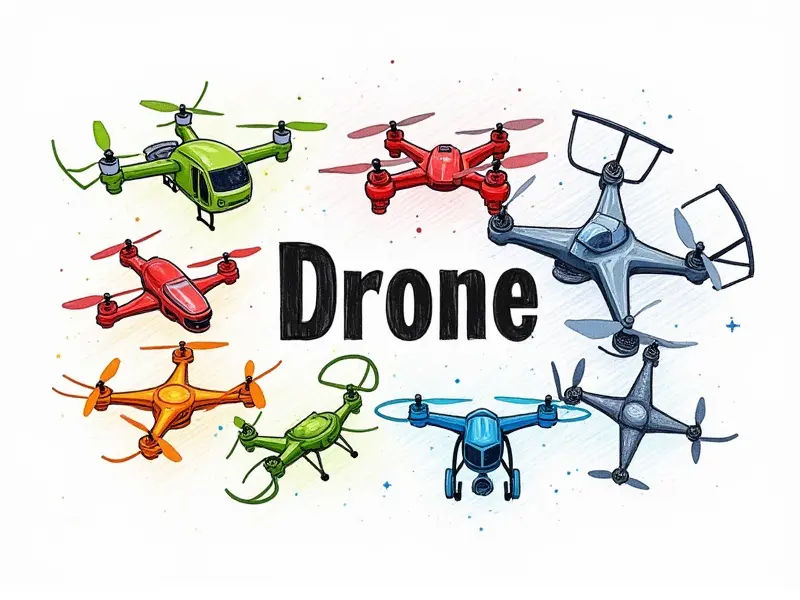How does an FPV receiver work?

First-person view (FPV) technology has revolutionized the world of remote-controlled aircraft, drones, and racing. At the heart of this technology lies the FPV receiver, a critical component that enables pilots to see real-time video footage from their vehicles. This article delves into the intricacies of how an FPV receiver works, providing insights for both beginners and seasoned enthusiasts.
Understanding FPV Receiver Technology
The core function of an FPV receiver is to receive signals transmitted by a transmitter or video transmitter (VTX) from the drone or aircraft. These signals carry high-definition video footage captured by on-board cameras, allowing pilots to see what their vehicle sees in real-time. This technology enhances control and situational awareness, making it indispensable for racing, aerial photography, and other applications.
FPV Receiver Basics For Beginners
For newcomers to FPV systems, understanding the basics is crucial. An FPV receiver typically operates on specific frequency bands such as 5.8GHz or 900MHz, which are less crowded than Wi-Fi frequencies and offer better range and reliability. These receivers come in various types, including diversity receivers that use multiple antennas for improved signal strength and stability.
Key Components of an FPV Receiver
- Antennas: Diversity receivers often feature two or more antennas to capture signals from different directions. This redundancy ensures a strong, stable connection even in challenging environments.
- Signal Processing Circuitry: Sophisticated circuitry processes incoming signals, filtering out noise and interference to deliver clear video feed.
- Power Supply: Reliable power supply is essential for consistent performance. Most receivers are powered via the flight controller or dedicated battery packs.
A Closer Look At FPV Receivers
Delving deeper into FPV receiver mechanics reveals a complex interplay of hardware and software components designed to optimize video transmission. The diversity antennas, as mentioned earlier, play a pivotal role in maintaining signal integrity by capturing signals from multiple angles.
Signal Quality & Interference
- Interference: Electromagnetic interference (EMI) can disrupt signal quality. FPV receivers are designed with advanced filtering techniques to mitigate this issue.
- Range Extenders: For long-range applications, range extenders or repeaters can be used to boost signal strength and coverage.
How To Set Up Your FPV Receiver
Setting up an FPV receiver involves several steps to ensure optimal performance. First, choose the appropriate frequency band based on your location and intended use case. Next, install the receiver in a secure position within the aircraft or drone frame.
Connecting Components
- Power Connection: Connect the power supply to the receiver using compatible connectors such as PDB (Power Distribution Board) or dedicated battery packs.
- Video Feed: Route the video feed from the camera to the receiver, ensuring proper alignment and signal integrity.
The Basics of FPV Receiver Operation
To fully grasp how an FPV receiver operates, it's essential to understand its role in the overall FPV system. The receiver acts as a bridge between the video transmitter (VTX) on the aircraft and the ground station equipment such as goggles or monitors.
Signal Transmission & Reception
- Transmission: Video signals are transmitted from the VTX to the FPV receiver via radio waves, typically in a line-of-sight configuration.
- Reception: The FPV receiver captures these signals and processes them for display on the pilot's monitor or goggles.
Unpacking FPV Receiver Mechanics
The mechanics of an FPV receiver involve intricate signal processing techniques to ensure high-quality video transmission. Advanced filtering algorithms are employed to eliminate noise and interference, while adaptive equalization adjusts signal strength based on environmental conditions.
Diversity Antenna Systems
- Redundancy: Multiple antennas provide redundancy, ensuring that at least one antenna maintains a strong connection even if others encounter obstacles or interference.
- Directional Sensitivity: Some diversity systems feature directional sensitivity to optimize signal reception from specific angles.
Exploring the Inner Workings of FPV Receivers
The inner workings of an FPV receiver are a testament to modern engineering. Signal processing chips, antennas, and power management circuits all work in concert to deliver seamless video transmission.
Signal Processing Techniques
- Noise Reduction: Advanced noise reduction algorithms filter out unwanted signals, ensuring clear video feed even in noisy environments.
- Error Correction: Error correction techniques correct for signal degradation and ensure data integrity throughout transmission.
FPV Receiver: Key Components & Functions
The key components of an FPV receiver include antennas, signal processing circuitry, power supply units, and control interfaces. Each component plays a crucial role in delivering high-quality video feed to the pilot's monitor or goggles.
Antenna Diversity
- Multipath Signals: Antenna diversity helps mitigate multipath signals by capturing multiple signal paths simultaneously.
- Environmental Adaptability: Diverse antenna systems adapt to changing environmental conditions, maintaining optimal performance across various scenarios.
Decoding FPV Receiver Signals
Understanding how FPV receiver signals are decoded is essential for troubleshooting and optimizing system performance. The decoding process involves demodulating the received signal, extracting video data, and displaying it on the pilot's monitor or goggles.
Signal Demodulation
- Demodulation: The receiver demodulates incoming signals to extract video information from radio waves.
- Data Extraction: Sophisticated algorithms process the extracted data, ensuring clear and uninterrupted video feed.
Mastering FPV Receiver Setup & Use
Mastery of FPV receiver setup and use is crucial for achieving optimal performance. Proper installation, configuration, and calibration are key to maximizing range, clarity, and overall system reliability.
Troubleshooting Tips
- Interference Check: Regularly check for interference sources such as Wi-Fi networks or other electronic devices that may disrupt signal quality.
- Signal Strength Testing: Use tools like signal strength meters to test and optimize antenna placement and orientation.
Conclusion
In conclusion, an FPV receiver is a sophisticated piece of technology that plays a vital role in the FPV ecosystem. By understanding its mechanics, components, and setup procedures, pilots can enhance their control and situational awareness, leading to more enjoyable and successful flights.

